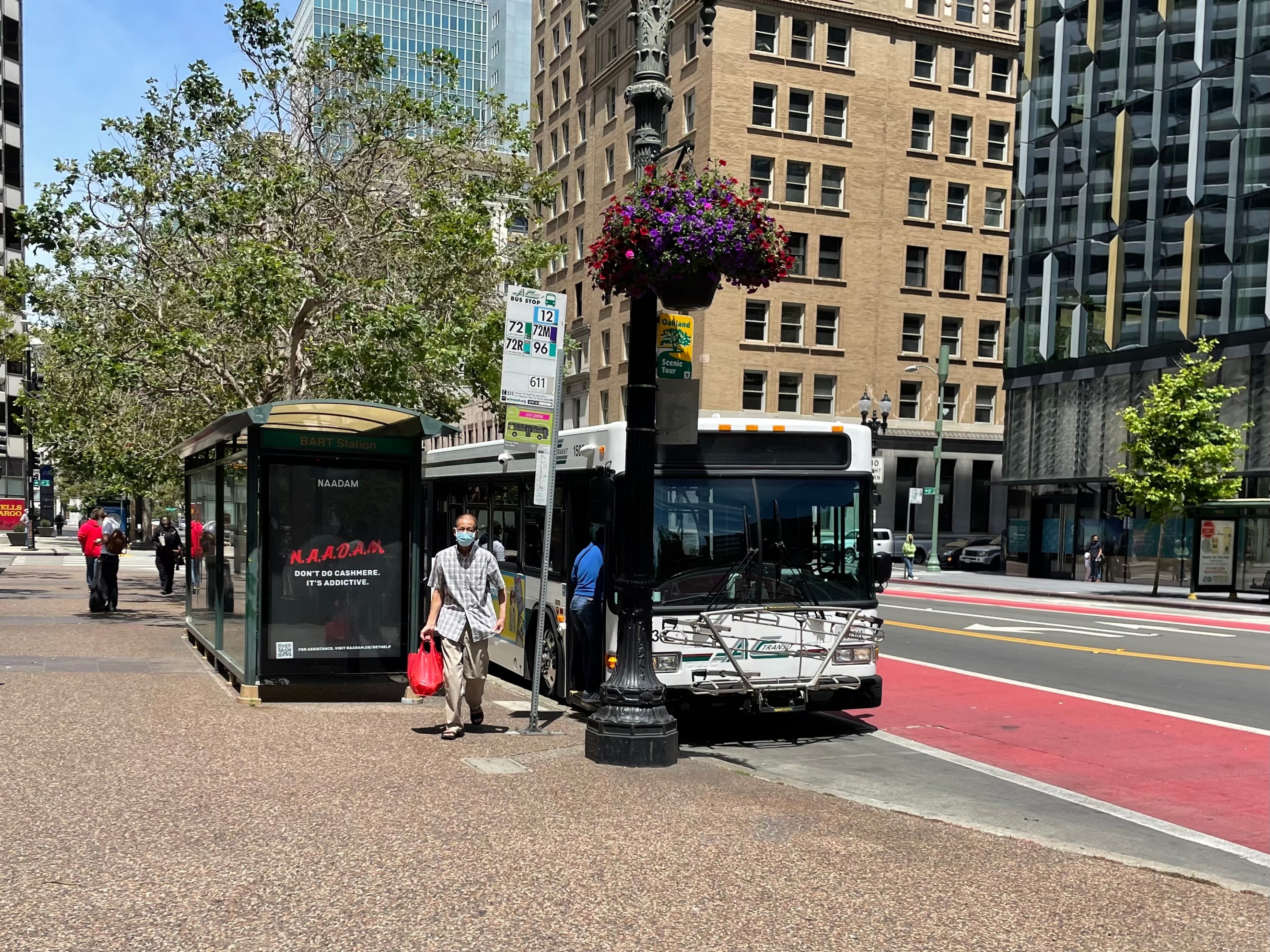(This is the first in a series of posts by Hayden AI, our newest advertising sponsor. Hayden AI is a global leader in smart enforcement technologies powered by artificial intelligence. Find out more about how their digital traffic enforcement platform increases safety, efficiency, and sustainability at Hayden.ai.)
Bus lanes get riders to their destinations faster, keep buses frequent and reliable, and – through increased ridership – reduce greenhouse gas emissions and traffic fatalities. But not if cars and trucks are illegally parked there.
Illegal parking and stopping in bus lanes is a huge problem in cities across California and the country. Parked cars force buses to merge into general traffic lanes, which significantly increases delays, hurts on-time performance, and makes bus service unreliable. Illegally parked cars at bus stops are also a well-known safety issue: when the bus can’t reach a stop, some disabled riders can’t access the bus at all, and others are forced to walk through a travel lane to board or exit.
In 2021, thanks to advocacy by California transit agencies, the state passed A.B. 917, legislation that permits automated camera enforcement of bus stops and bus-only lanes. This is the most comprehensive automated enforcement law for public transit in the country – and presents a huge opportunity for transit agencies to seriously improve service at a time of declining ridership and changing travel patterns as a result of COVID-19.
A.B. 917 is especially groundbreaking because it also authorizes automated enforcement of bus stop no-parking zones – so an agency doesn’t have to have bus lanes to benefit from this law. Illegally parked vehicles blocking parts of bus stops create safety hazards for riders boarding and exiting the bus, especially for riders with disabilities.
With Hayden AI’s automated bus enforcement platform, artificial intelligence-powered camera systems are installed behind bus windshields and use computer vision and artificial intelligence to capture and process every single bus lane and bus stop event observed, with the goal of improving safety and on-time performance. The system is designed to prioritize privacy: the cameras have no facial recognition capabilities, and the only data that is stored and shared is directly related to collecting evidence of cars and trucks blocking the bus’ path.
By keeping bus lanes and bus stops clear of illegally parked cars, trucks, and delivery fleets – any vehicle that shouldn’t be there – automated bus lane enforcement enables more reliable, faster bus rides. Already available in other major cities across the U.S., Hayden AI is bringing its technology to California transit agencies striving to improve equity for transit riders.
In 2019, after the New York MTA began automated enforcement of bus lanes, they saw a 17 percent increase in speed along the dedicated bus lanes on the B44. More recently, in April, new dedicated bus lanes along SFMTA’s Van Ness bus route were not only expected to reduce congestion, but also shorten travel times by as much as 32 percent. With improved speed and reliability, buses are more likely to stay on schedule, which can increase ridership, as improvements in service reliability have about twice as much effect on ridership as fares.
Though the short-term benefits of a faster transit trip are huge, there’s also an enormous potential to improve economic mobility with a shorter commute. Commute time is the number one predictor of economic mobility, and across the United States, transit riders experience some of the longest commutes to work. This is particularly problematic as transit riders are disproportionately low income and have the least access to transportation and, as a result, the ability to move up the economic ladder.
By leveraging AI to tackle pressing urban challenges like blocked bus lanes and stops, Hayden AI can empower governments to build more accessible, sustainable streets and cities. As transit agencies across the country have access to higher levels of capital funding than ever before thanks to the recently-passed Bipartisan Infrastructure Law, now is the time for California agencies to leverage the true power of automated bus lane enforcement. And hopefully other states can follow California’s lead and deliver the best possible transit service to create more equitable and more sustainable streets.







